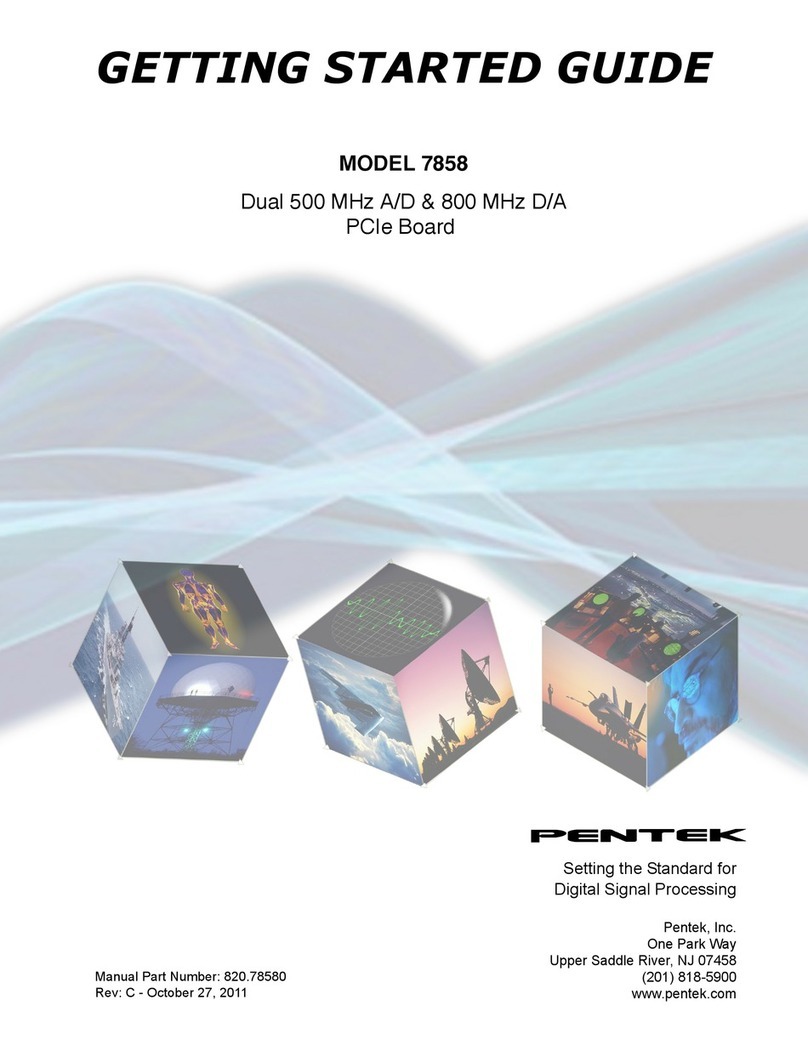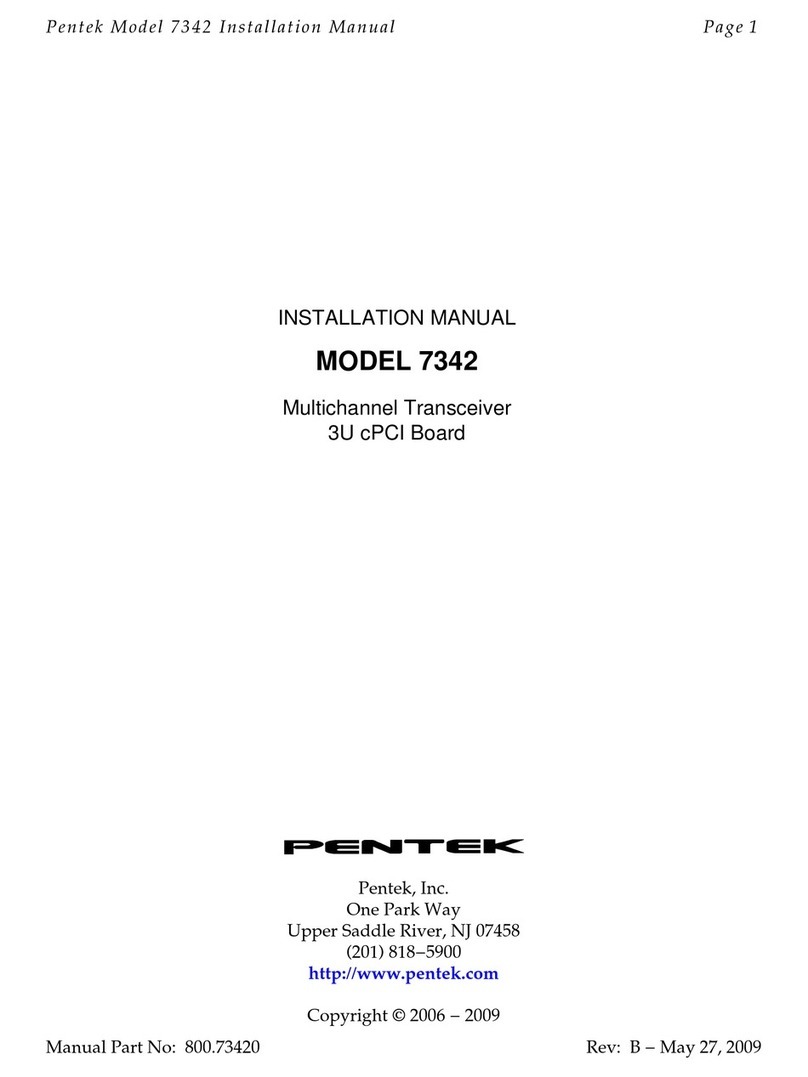
Pentek Model 78741 Installation Manual Page 3
Table of Contents
Rev.: 2.5
Chapter 1: Introduction
1.1 General Description..............................................................................................................................5
1.2 Model 78741 Features...........................................................................................................................5
1.3 Model 78741 Documentation ..............................................................................................................5
1.4 Model 78741 Block Diagram ...............................................................................................................6
Figure 1−1: Model 78741 Block Diagram.........................................................................................6
1.5 Principle of Operation..........................................................................................................................7
1.6 Specifications.........................................................................................................................................8
Chapter 2: Installation and Connections
2.1 Inspection...............................................................................................................................................9
Figure 2−1: Model 78741 Assembly..................................................................................................9
2.2 Jumper and Switch Settings ..............................................................................................................10
2.3 Removing XMC Module from PCIe Carrier ..................................................................................11
Figure 2−2: Removing 71741 XMC from PCIe Carrier................................................................11
2.4 XMC Module Switches ......................................................................................................................12
Figure 2−3: Model 71741 XMC PCB Assembly Drawing, Solder Side....................................12
Table 2−1: SW1 − FPGA Configuration ........................................................................................13
Table 2−2: FPGA Configuration Select − Switches SW1−3:4....................................................13
2.5 XMC Module LEDs ............................................................................................................................14
Figure 2−4: Model 71741 Main PCB, Solder Side LEDs .............................................................14
Table 2−3: XMC PCB LED Use........................................................................................................15
2.6 PCIe Carrier Jumpers .........................................................................................................................16
Figure 2−5: Model 7807 PCIe Carrier PCB Connector Side − Jumpers & Switches..............16
Table 2−4: JTAG Signal Select − Jumper Blocks J18, J19, J20, J21, J22 ....................................17
2.7 PCIe Carrier Switches ........................................................................................................................18
Table 2−5: XMC Modes − Switch SW1..........................................................................................18
2.8 PCIe Carrier LEDs ..............................................................................................................................19
Figure 2−6: Model 7807 PCIe Carrier PCB Solder Side, LEDs..................................................19
2.9 PCIe Carrier Connectors....................................................................................................................20
2.9.1 Power Connector ..............................................................................................................20
2.9.2 JTAG Connector ................................................................................................................20
Table 2−6: JTAG J4 Connector .......................................................................................20
2.9.3 Fan Connector ...................................................................................................................20
Figure 2−7: PCIe Carrier Block Diagram......................................................................21
2.9.4 XMC Connectors ...............................................................................................................21
2.9.5 PMC Connector (Option 104) .........................................................................................21
2.9.6 GPIO Connector (Option 104) .........................................................................................22
Table 2−7: GPIO Connector Pins...................................................................................22
2.9.7 Gigabit Serial I/O Connectors ........................................................................................23
Table 2−8: Serial I/O Connectors J24, J25 Pins............................................................23
2.9.8 Gigabit Serial Power & Control Connectors .................................................................24
Table 2−9: Power & Control Connectors J26, J27 Pins...............................................24





























